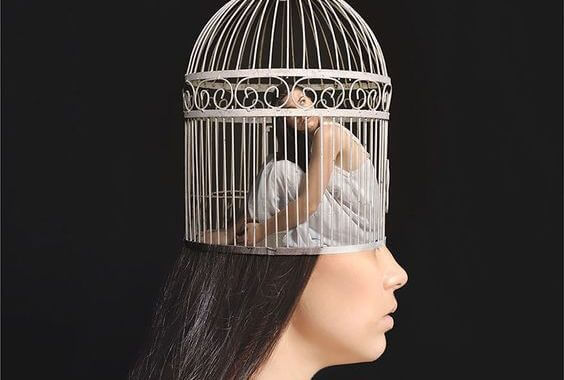Anxiety is one of the great evils of our time, so much so that there are already several types of anxiety referenced and increasingly extensive classifications continue to appear, it is not surprising that we consider that the times in which we live are sometimes very demanding and that balance, both ours and that we have with others , is potentially dynamic.
Anxiety is one of the faces of fear. But unlike fear itself, there is no specific stimulus here to provoke it. Fear is normal in the face of a specific threat and we realize that our integrity may be in danger. But anxiety is a form of fear that often doesn’t have a specific cause. so it is not easy to intervene on the origin of this anxiety or on the factors that make it recurrent.
“Fear sharpens the senses. Anxiety paralyzes them. -Kurt Goldstein-
Do you realize that anxiety surrounds you because you feel restless, anxious or worried?, inaccurate or something specific that doesn’t know how to deal with it, as if you were inside a plane in free fall, even if you’re really sitting. in your living room watching TV. You feel an inner agitation that doesn’t leave you alone, makes you feel restless, irritated, uncomfortable, but you can’t identify why.
There are several types of common anxiety. Some people just prefer to call them?Stress? Or “concern” but if examined under the microscope, there are very strong forms of anxiety. The good thing is that any of these kinds of anxiety can be overcome. To achieve this, the first thing to do is to get to know them a little more.
Generalized anxiety disorder is defined as a state of constant concern, for no particular reason for this to occur, should last more than 6 months and is often accompanied by difficulty sleeping, irritability, concentration problems and generalized fatigue.
Social anxiety, in turn, is a condition in which a person experiences fear or distress in all situations in which he needs to interact socially with others, that is, he is afraid of contact with others, much of this anxiety is anticipatory. , that is, it occurs before the dreaded social contact.
Both conditions drastically impair a person’s quality of life. These are conditions that do not heal on their own, over time, as they are often known with different avoidance behaviors. These are not difficult times, but situations that require professional treatment.
In most cases, short therapy is sufficient to regain control of emotions, in other situations longer interventions are required, but the likelihood of overcoming these conditions, in any case, is very high.
Obsessive-compulsive disorders are of various types, but they all have in common the fact that there is a persistent and intrusive idea that causes fear and anxiety, so no matter how much the person tries to get that idea out of their head, they can ”. t) These obsessions can invade personality and cause existential paralysis.
Post-traumatic stress is the anxiety that occurs after a traumatic experience, manifesting itself in restlessness, difficulty sleeping and, mainly, a recurring fantasy that will happen again, leading the person to remain alert and fuel insecurity and isolation.
In both cases, and depending on the severity of the symptoms, there are different ways to overcome the problem, practicing a relaxation method can contribute significantly to reducing anxiety and increasing the ability to concentrate, if these methods are not effective, occupational therapy is an excellent alternative, with great potential for success.
Agoraphobia has become one of the most common types of anxiety today. It is a diffuse and uncertain fear of all situations in which there seems to be no way out, or where there is no possibility of receiving help, if the person is having a panic attack. That is, the person thinks that they may be having a panic attack and that, under certain circumstances, they will not be able to escape or receive help. In a way, it’s a form of fear of fear.
More and more agoraphobia consultations are becoming more and more agoraphobic, and those who have a lot of pain and feel great limitations in living a normal life. Something similar happens with hypochondriaacs who catastrophically interpret any sign of their body. They suspect they have serious illnesses and feel that their condition can get worse at any time, without being able to do anything about it.
In both cases, it is recommended to practice some kind of relaxation. These help reduce or turn off increased anxiety and better identify the signals the body sends. They also produce greater self-control. Regular exercise also helps in this regard. As in other cases, if this is not enough, professional help will always be the most reliable alternative.
Images courtesy of Philipp Mackay.

